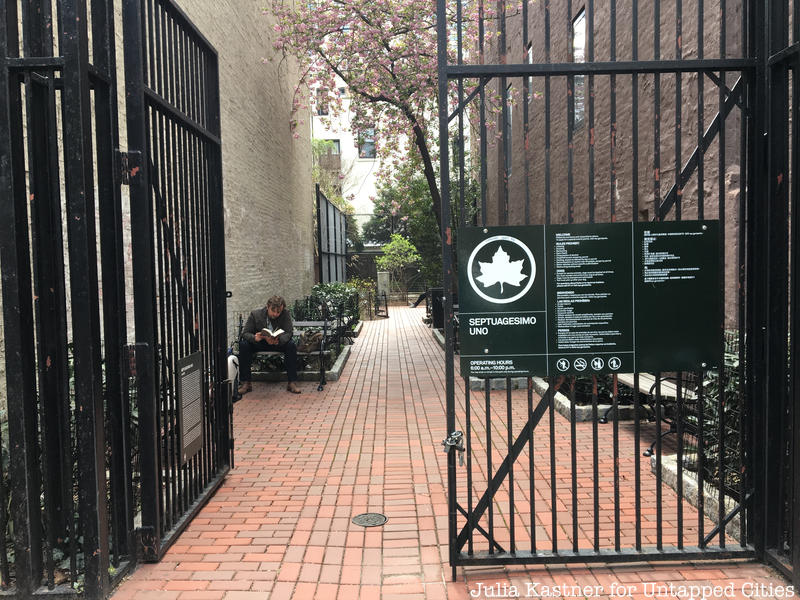Untapped New York has had offices in many different neighborhoods throughout the years and Lincoln Square was home to two of our early ones. It’s a neighborhood that I lived in from 1994 to 2015 and was privy to one of its large transformations from post-urban renewal landscape to the place it is today. For the purposes of this article, we will define Lincoln Square as the area from 60th Street to 71st Street, from Central Park to the Hudson River. This residential and commercial neighborhood includes, of course, Lincoln Center, but also the numerous institutions around it — some that have distinct associations with the music and arts center, others which pre-date it.
The area was once home to San Juan Hill, a vibrant jazz neighborhood that was home to Thelonius Monk. Targeted for urban renewal by Robert Moses, San Juan Hill was replaced by Lincoln Center, but not before scenes of the original West Side Story were filmed amidst the rubble. It took almost many decades for the area to revitalize, as was common with the mid-century urban renewal projects. But today, there are few reminders of the former neighborhood which has been replaced by glass, glitz and glamour. Despite a flurry of development (some argue overdevelopment), there are still some hidden gems to discover in Lincoln Square.
1. One of NYC’s Smallest Parks: Septuagesimo Uno

Septuagesimo Uno is one of Manhattan’s smallest parks (7th smallest, to be exact though it is often mistakenly cited as New York City’s smallest park. Located at 256 West 71st Street, its Latin name derives from the number 71. It’s secluded between two brownstones with some benches and received an upgrade in recent years with new brick paving, new trees, and benches.
Septuagesimo Uno was acquired by the city through condemnation on March 28, 1969, near the height of the city’s budget woes and was originally named the “71st Street Plot.”. The park wasn’t officially opened by the parks department until May 1981 and in 2000, the park benefitted from a $14,000 restoration project that, among other things, contributed the gates that now help enforce the park’s opening hours.





